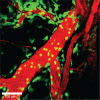Natural-Product-Based Solutions for Tropical Infectious Diseases
- PMID: 34494873
- PMCID: PMC8673330
- DOI: 10.1128/CMR.00348-20
Natural-Product-Based Solutions for Tropical Infectious Diseases
Abstract
About half of the world's population and 80% of the world's biodiversity can be found in the tropics. Many diseases are specific to the tropics, with at least 41 diseases caused by endemic bacteria, viruses, parasites, and fungi. Such diseases are of increasing concern, as the geographic range of tropical diseases is expanding due to climate change, urbanization, change in agricultural practices, deforestation, and loss of biodiversity. While traditional medicines have been used for centuries in the treatment of tropical diseases, the active natural compounds within these medicines remain largely unknown. In this review, we describe infectious diseases specific to the tropics, including their causative pathogens, modes of transmission, recent major outbreaks, and geographic locations. We further review current treatments for these tropical diseases, carefully consider the biodiscovery potential of the tropical biome, and discuss a range of technologies being used for drug development from natural resources. We provide a list of natural products with antimicrobial activity, detailing the source organisms and their effectiveness as treatment. We discuss how technological advancements, such as next-generation sequencing, are driving high-throughput natural product screening pipelines to identify compounds with therapeutic properties. This review demonstrates the impact natural products from the vast tropical biome have in the treatment of tropical infectious diseases and how high-throughput technical capacity will accelerate this discovery process.
Keywords: drug development; infectious disease; microbiology; natural products; tropics.
Figures



References
-
- Pan SY, Litscher G, Gao SH, Zhou SF, Yu ZL, Chen HQ, Zhang SF, Tang MK, Sun JN, Ko KM. 2014. Historical perspective of traditional indigenous medical practices: the current renaissance and conservation of herbal resources. Evid Based Complement Alternat Med 2014:525340. 10.1155/2014/525340. - DOI - PMC - PubMed
-
- Anonymous. 2013. WHO traditional medicine strategy: 2014–2023. WHO, Geneva, Switzerland.
Publication types
MeSH terms
Substances
Grants and funding
- 2R01CA164719-06A1/HHS | National Institutes of Health (NIH)
- R01 CA164719/CA/NCI NIH HHS/United States
- APP1183323/Department of Health, Australian Government | National Health and Medical Research Council (NHMRC)
- APP1140709/Department of Health, Australian Government | National Health and Medical Research Council (NHMRC)
- APP5121190/Department of Health, Australian Government | National Health and Medical Research Council (NHMRC)
LinkOut - more resources
Full Text Sources
Medical
Molecular Biology Databases

